Farmers worldwide produce many agricultural products yearly. There is a huge list of agricultural products and their uses. The list of agricultural products and their uses is enormous, and new varieties are incorporated each year due to the adaption of modern farming techniques.
Agriculture is a broad term related to everything from crop growing to raising animals to provide food and supplies that people can use to live a happy life. One part of agriculture is farming which involves land cultivation and livestock raising, including plant science.
People from all over the world have been cultivating for thousands of years. Thanks to modern agricultural innovation and phytosanitary technologies, farmers have achieved the highest yields on their farms, which enables the world to eliminate hunger from the earth.
Farming for farmers is also a lifestyle, subsistence, and passion they enjoy every day.
What are Agricultural Products?
Agricultural products are the production of any agricultural or livestock product; with cereals from cereal crops and milk from dairy animals, the list of farm products and their uses continues to grow.
Remember that from agricultural products, it is possible to achieve some other by-products by processing agricultural products.
Everybody knows that, directly or indirectly, we are dependent on agriculture. Either agricultural products are in their original form, or they can be in processed form.
The products in their original form can be corn, paddy fruits, vegetables, rice, cereals, etc., while processed products include oils such as peanut oil, coconut oil, sunflower oil, sugar, jute, etc.
Here we will look at the top list of agricultural products and their uses. These products are grown and used worldwide.
Rice
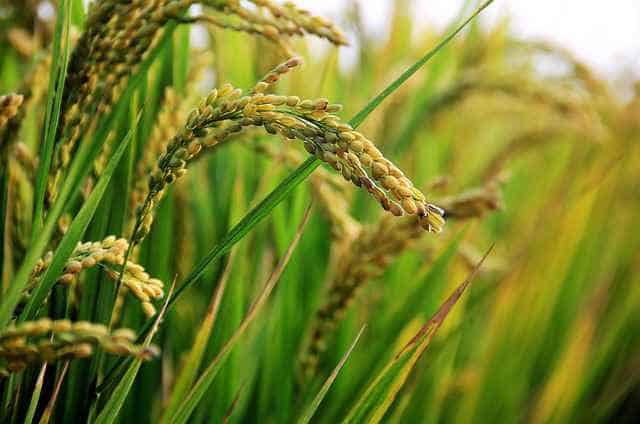
Rice is a primary food crop worldwide, with approximately 10,000 species. For millions worldwide, rice is life for them as they get 60-70 percent of their calories from rice and its products.
The UN General Assembly recognized the importance of rice and declared 2004 the International Year of Rice.
The IYR (International Year of Rice) emphasizes the importance of rice as a primary food source. The Asian continent leads global rice production, with China and India leading producers.
Rice is one of the three most important food crops globally, the other two being corn and wheat. [1]
Rice, wheat, and corn directly produce at least 42% of the caloric intake required by the world, and human consumption in 2009 accounted for 78% of total rice production.
More than 3.5 billion people in the world consider rice their primary food, meaning at least half of the world’s population. For this reason, experts do not see a reduction in future consumption of rice, particularly from food sources from African and Asian countries.
Maize
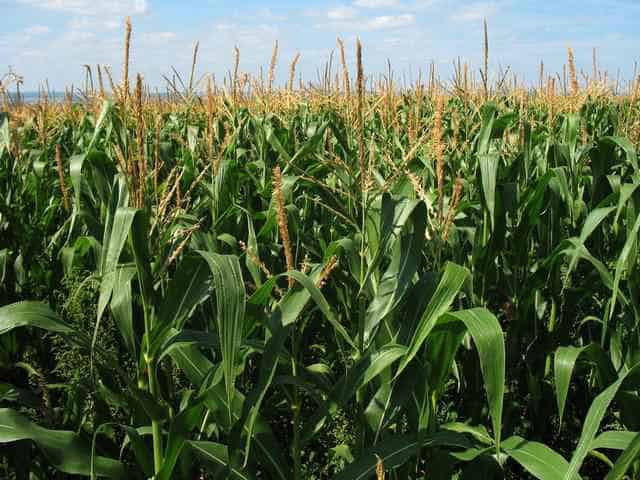
Maiz is widely grown around the globe, and the world produces more maize every year than any other grain. Forty percent of world maize production comes from the United States. Other major maize-producing countries are Indonesia, China, India, Brazil, Mexico, Argentina, and France.
Worldwide, 765 million tons of maize from almost 153 million hectares were harvested in 2010. Approximately 73% of this area is in developing countries.
Presently maize is grown on almost 100 million hectares in 125 developing countries and is one of the three most grown crops in those 75 countries.
Production can be much higher in some parts of the world; the estimated output in Iowa for 2009 was 11,614 kg/hectare. The evidence contradicts the hypothesis that maize yield potential has increased in recent decades.
It suggests that changes in potential yield are related to leaf angle, slope resistance, high plant density, disease/pest resistance, and other agricultural characteristics rather than an increase in the output of each plant.
Also Read: Different Vegetables Cultivated in India
Wheat
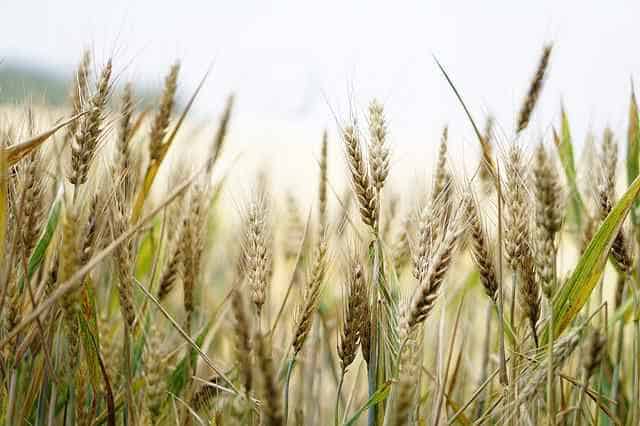
Wheat cultivation is more on land than any other crop; 2.5 billion people in 89 countries consume wheat. In 2014 it was grown on 220.4 million hectares. The world wheat trade is more than all other crops combined.
Global wheat production, which stood at 772 million tonnes in 2017, was the second-largest grain produced after maize, with a production forecast of 766 million tonnes for 2019.
Global wheat production and other crops have tripled since 1960 and are expected to increase towards the middle of the 21st century. Worldwide, wheat demand has risen because of gluten proteins’ unique viscoelastic and sticky properties present in wheat.
Gluten help in food processing, and processed food consumption is increasing due to the global process of industrialization and Western foods.
Wheat is an essential source of carbohydrates. It is the primary source of plant protein in human food worldwide, with approx. 13%, which is high compared to other whole grains. [3]
Wheat growing conditions are more flexible than rice. It is a Rabi crop sown in early winter and harvested in early summer.
According to Food and Agriculture Organization Corporate Statistical Database (FAOSTAT), there is more wheat production in China than in any other country. India is second, Russia third, and the US fourth.
China, India, Russia, the US, France, Australia, Canada, Pakistan, Ukraine, and Germany are the top wheat-producing countries.
Rye
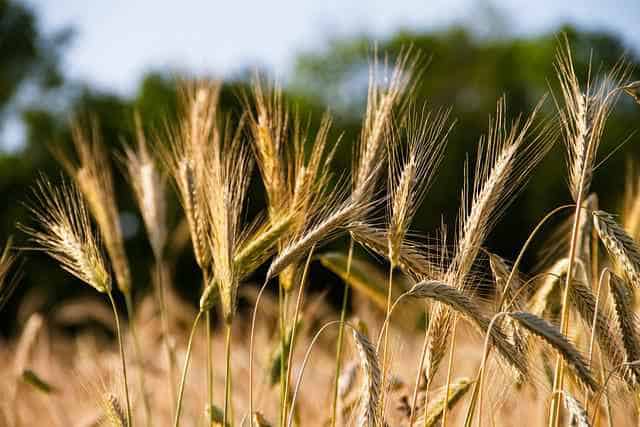
Rye belongs to the wheat family and is a type of grain. This plant is native to the central and eastern regions of Turkey. Archaeological research suggests that it could be grown in small quantities during the Neolithic era.
Rye reached Central Europe and was planted in large quantities during the Bronze Age. Presently bread, flour, whiskey, beer, and animal feed are made from rye. It can also be eaten as a whole cereal.
Many parts of the world grow this plant, although its primary production remains in the areas where it was historically cultivated.
It can be grown in more diverse environmental conditions than other small grains, from Scandinavia to southern Chile and in the highlands along the equator. But, it cannot survive floods and is hardly seen in tropical and subtropical countries.
The top 10 Rye producers of the world produce and harvest about 90% of world Rye production. The three largest producers of Ray are Poland, Germany, and Russia; they also have the most remarkable diversity in their production. [5]
Jowar (Sorghum)

Jowar (Sorghum) is a cereal plant and has been classified as one of the major grains grown in the world. The first sorghum species has been found in Australia, Africa, the Indian Ocean, Mesoamerica, and parts of the Pacific Ocean. Jowar grows well in hot climates.
Jowar (sorghum) is one of the most important cereals in the world. It is the leading food for millions of poor people living in rural areas of Asia and Africa. [6]
Jowar is grown for domestic consumption and as a cash crop. It has several uses, including human food, animal feed, alcoholic beverages, and biofuels.
Nutritionists classify sorghum as very healthy because it is rich in essential nutrients for the body.
Due to the growing nutritional and commercial value, many regions of the world produce Jowar on a large scale.
According to the statistics data from the Food and Agriculture Organization (FAOSTAT), the United States is the largest producer of Jowar in the world, with 11.5 million tonnes of total production.
Millets
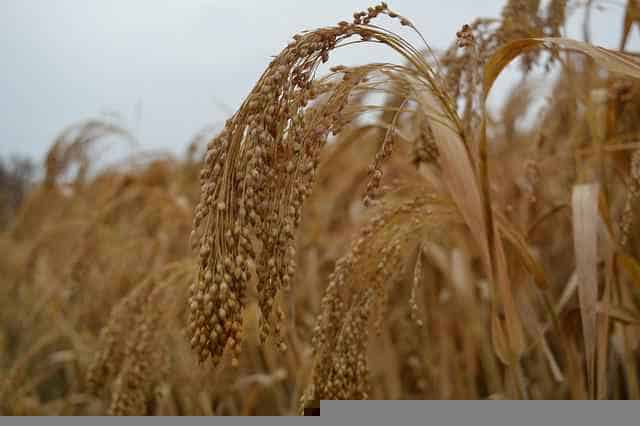
Millets term is used for several grass plant crops. The seeds of millets are collected for human or animal consumption. Millet is an essential crop in the sub-tropics of Asia and Africa, particularly India, Nigeria, and Mali. Its production accounts for 97% of developing countries.
Compared to other grains, millets are suitable for less fertile soil and can bear harsh grown conditions like little rainfall and burning heat.
Besides, Millets need a short season to grow. Mills are unique in many parts of the world. The most cultivated is pearl millet, an important crop in India and some areas of Africa.
Finger, foxtail, and proso millet are important crop types. In New Mexico, the commonly grown Millets include pearl hybrid verities and foxtail verities.
Millets have been consumed by people for about 7,000 years and could play an important role in developing multi-crop farming and the settlement of farming societies.
It is a drought-resistant plant. It is widely grown around the world for use as food and feed.
The United Nations General Assembly recently approved a resolution to celebrate 2023 as the International Year of Millets. India presented the resolution with Bangladesh, Nepal, Kenya, Russia, and Senegal. [8]
Jute

Jute is a natural fiber crop obtained from the plants of the Corchorus Genus; it is made up of plant cells and lignin. Jute fibers have many uses, including producing biodegradable packaging materials like gunny bags.
In terms of worldwide production and consumption, jute is considered the second most crucial plant fiber after cotton. India and Bangladesh produce an enormous quantity of world production, with global production estimated at over 3.3 million tonnes per year.
During the growing season, it needs temperatures from 24 to 35 ° C and heavy rainfall of 120 to 150 cm with a relative humidity of 80 to 90 percent. Rainfall ranges from 2.5 cm to 7.5 cm during the month of planting time is considered sufficient.
For its production, slightly sandy or loamy clay is considered the most suitable land.
The jute industry provides 0.37 million workers with direct employment in organized factories and various units, including the commercialized sector and related activities. It supports the livelihoods of approximately 4.0 million farmer families. Also, vast numbers of people are involved in jute trading. [9]
Cotton
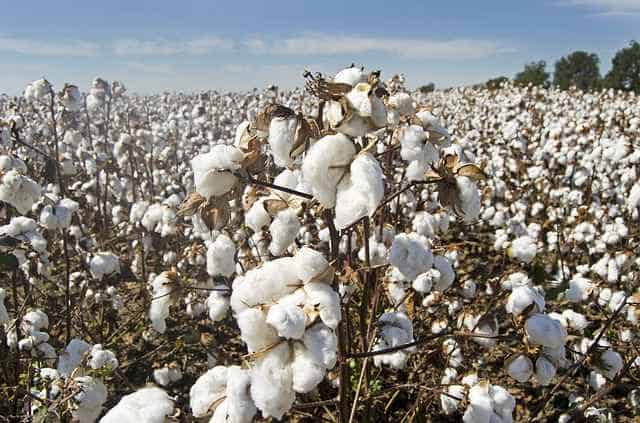
Cotton is an important fiber for clothing and many other textile products. The crop has 7,000 years back history. It is grown by many cultures around the world.
Four types of cotton are commonly grown: Gossypium hirsutum, Gossypium barbadense, Gossypium arboretum, and Gossypium herbaceum.
Worldwide cotton production is around 25 million tons annually, with China being the world’s largest cotton producer.
The cotton plant is a plant of the tropics and subtropics and requires an equally high temperature between 21 ° C and 30 ° C. Its growth decreases when the temperature drops below 20 ° C.
Cotton grows in frost-free areas for at least 210 days per year; frost is the enemy of cotton and the cotton plant.
Cotton cultivation requires simple water requirements, averaging 50 to 100 cm of rainfall. It can also grow in fewer rainfall areas with the help of irrigation.
In the beginning, sufficient rain and sunny and dry weather during ripening are useful for cotton cultivation. Deep black soil is the best type of soil for its cultivation.
The leading cotton producers are China, Pakistan, India, Australia, the USA, Greece, Uzbekistan, Turkmenistan, and Turkey.
Sugarcane
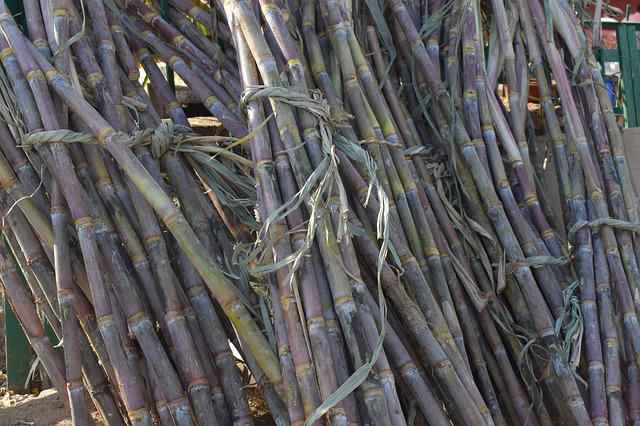
Sugarcane (Saccharum officinarum) is a tall perennial grass of the Poaceae family. The main growing aim of this plant is to obtain sugar. Sugarcane is cultivated mainly in tropical and subtropical areas of the world.
The plant is 2 to 6 m (6 to 20 feet) tall and has a strong, fused, branched, fibrous stem rich in sucrose that accumulates in the stem nodes.
It belongs to the Poaceae grass family, a family of flowering plants with economic importance, including corn, wheat, rice, sorghum, and several fodder crops. It originates from the warm and temperate tropics of India, Southeast Asia, and New Guinea.
In terms of production, quantity sugarcane is the largest crop. It is grown in tropical and sub-tropical areas, with 1.8 billion tonnes produced in 2017, with Brazil accounting for 40% of total production.
In Brazil, sugarcane is used to obtain biofuel because sugarcane can be directly used to produce ethyl alcohol.
Mustard Cultivation

Mustard seeds are tiny seeds from the mustard plant. These seeds can be available in various colors depending on the plant. These include black mustard, Indian brown mustard, and white mustard.
Mustard is grown on 307,000 hectares with 233 000 tonnes of annual production and gives approx. 17% contribution to the national production of edible oil. [11]
These seeds usually take eight to ten days to germinate when planted in the right conditions, including a cold atmosphere and comparably moist soil. Mustard plants grow into shrubs when they mature.
In temperate regions, mustard thrives well. Pakistan, Nepal, India, Hungary, England, Canada, and the United States of America are the leading producers of mustard seeds.
Black and Brown mustard seeds give higher yields than yellow ones.
Seeds and mustard oil are used for cooking. It is the third most crucial seed oil globally after soybean and palm oil. Young leaves are used for vegetable purposes. Oil cakes of mustard are used as cattle feed.
Conclusion
Agriculture plays a vital role in any nation’s economy and a person’s life. We are directly or indirectly dependent on agriculture.
We buy food items from grosser stores because of the agriculture industry. There are also other things available from which we can choose something of our desire.
The list of agricultural products and their uses is vast. These products include fruits, vegetables, nuts, grains, etc. Many other essential products are vital for the food supply.


